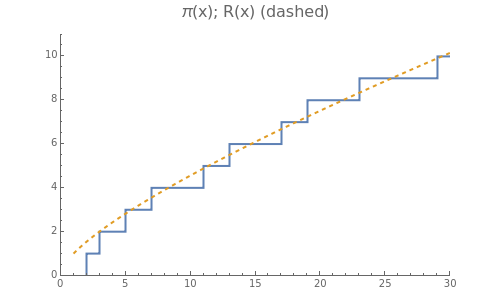How the Zeros of the Zeta Function Predict the Distribution of Primes
How the Zeros of the Zeta Function Predict the Distribution of Primes
In number theory, is the number of primes less than or equal to . Primes occur seemingly at random, so the graph of is quite irregular. This Demonstration shows how to use the zeros (roots) of the Riemann zeta function to get a smooth function that closely tracks the jumps and irregularities of . This illustrates the deep connection between the zeros of the zeta function and the distribution of primes.
π(x)
x
π(x)
ζ(s)
π(x)
